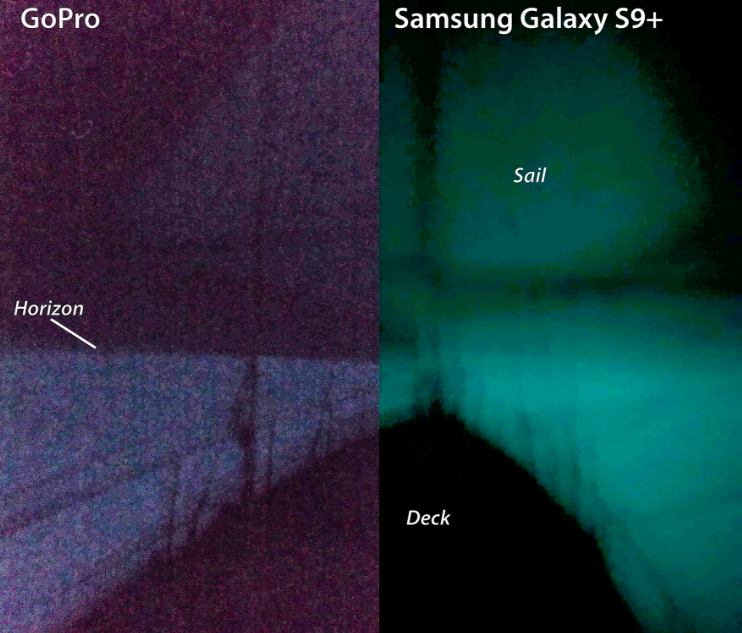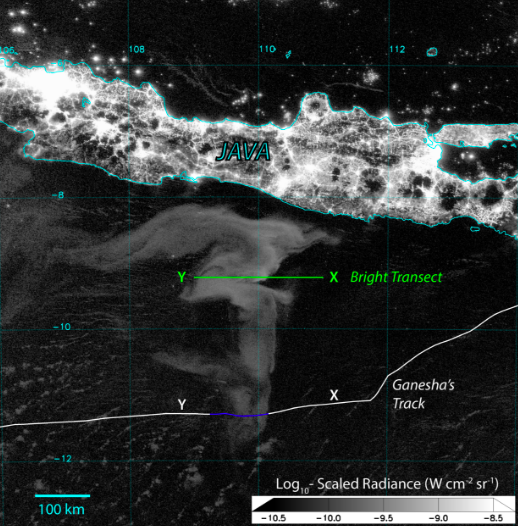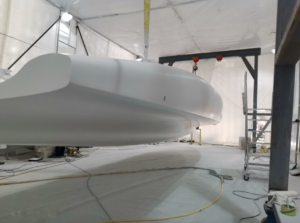Fabled ‘milky sea’ caught on camera by yacht crew

A yacht captain and crew have had their claim – of witnessing a milky sea – verified by the National Academy of Sciences’ journal. And, in a world first, this is the first time the phenomena has been caught on camera.
Ganesha, 16m, was embarking on a circumnavigation of the globe when it crossed the 2019 Java milky sea on its leg between Lombok, Indonesia, and the Cocos (Keeling) Islands in the east Indian Ocean.
An entry from Ganesha’s ship’s log, captained by Johan Lemmens with six other crew aboard, reads: ‘When waking up at 2200 the sea was white. There is no moon, the sea is apparently full of ? plankton ? but the bow wave is black! It gives the impression of sailing on snow!’
And, Ganesha’s crew subsequently found out they’d missed the brightest part.

Milky seas are massive swathes of uniformly and steadily glowing ocean seen at night. The phenomenon is thought to be caused by luminous bacteria, but details of milky sea composition, structure, cause, and implications remain largely uncertain. Between late July and early September 2019, specialised low-light satellite sensors detected a possible bioluminescent milky sea south of Java, Indonesia, spanning >100,000 km2.
When Ganesha’s crew heard about the satellite imagery, they reached out to confirm and share details of their personal encounter with this same event.
Interviews with the crew, says Steven Miller (the report’s author), revealed Ganesha entered the glowing waters suddenly. And, the entire ocean was significantly brighter than the night sky.
The crew collected a bucket sample of the water. That action didn’t disrupt the illumination and the bucket then contained several pinpoints of steady glow which darkened upon stirring, (This, says Miller, is the opposite behaviour to that of “normal” bioluminescence). The crew says the bow wave was darker, but the ship wake had no perceivable change in brightness from the surrounding glowing waters.
Milky seas are a rare form of marine bioluminescence which observers say look like a daylit snowfield under dark, moonless skies. Sailors’ reports over the centuries suggest milky seas occur preferably in the northwestern Indian Ocean and Maritime Continent region. Unlike the moving flashes of bioluminescence made by phytoplankton in disturbed waters, milky seas produce a steady glow, even in calm waters. They are thought to be caused by luminous bacteria, communicating with each other and triggering a glowing response upon reaching critical populations.
Milky seas are remote, transient, and infrequent, thus not much is known about them.
But a recent 10-year survey of data (from an imager capable of detecting light a billion times fainter than sunlight linked to the National Oceanic and Atmospheric Administration’s environmental satellites) revealed 12 milky sea candidates. This included the large event (>100,000 km2) south of Java in July–September 2019.
Thanks to Ganesha’s account, satellite data has been related to surface observations, including raw photography of the waters aglow.
The crew took pictures with a Go-Pro camera and a higher-quality Samsung Galaxy S9+ phone camera and the images give visual testimony to the written accounts of mariners across the centuries.
“Both the colour and intensity of the glow was akin to glow-in-the-dark stars/stickers, or some watches that have glowing parts on the hands … a very soft glow that was gentle on the eyes,” one of the crew told Miller.
The crew also believed the glow originated from some depth (∼10 m) below the surface. This, combined with the lack of a darkened ship wake, contradicts previous hypotheses of a milky sea being a surface slick structure.
Charles Darwin sailed through milky seas just off the southern tip of South America.
“While sailing a little south of the Plata on one very dark night, the sea presented a wonderful and most beautiful spectacle. There was a fresh breeze, and every part of the surface, which during the day is seen as foam, now glowed with a pale light. . . . As far as the eye reached, the crest of every wave was bright, and the sky above the horizon, from the reflected glare of these livid flames, was not so utterly obscure as over the vault of the heavens.” (The Voyage of the Beagle: Chapter VIII: Banda Oriental And Patagonia.)
Other mariners also reported colossal phosphorescent seas that stretch as far as the eye could see, says Forbes. Milky seas were mentioned in Jules Verne’s 20,000 Leagues Under the Sea (1869) and in Herman Melville’s Moby-Dick (1851), which elevated this phenomenon further in public’s imagination.
There are many elusive phenomenon within ocean lore. Ganesha’s willingness to share its experience is helping to unpick at least one. Seals are thought to be the basis of many legends, with their confident behaviour. In June 2021, a seal was filmed as it climbed onboard, and joined a paddleboarder, in Poole Harbour.
Main image taken by Ganesha’s crew.











